Reactive masterpiece SV Ilyushin. Part I. From Creation to the series.
Designing a new front-line bomber, an OKB S.V. team Ilyushin, started on his own initiative in 1947. The reason for this was the detailed analysis of the tests of an experienced Il-22 jet bomber. An assessment of its strengths and weaknesses against the background of the capabilities of jet fighters already created, at that time, showed that the IL-22 layout scheme and its further development no longer meets current requirements for modern front-line bombers.
It was necessary to find a new design solution. At that time, there was no unambiguous approach to this issue in the world aircraft industry. British aircraft designers, fascinated by the success of the high-speed Mosquito created during the war, decided to further develop the medium-sized bomber Aviation in the same tactical plan. So, on the high-altitude bomber “Canberra”, the company “English Electric”, in order to achieve high speeds and maneuverability, they completely refused to install defensive weapons. In the USA, at the end of the war, they formulated their requirements for a tactical bomber attack aircraft: solid small arms, impressive bomb load and high speed. It was planned that he would have a powerful cannon battery in the bow, carry more than 5000 kg of bombs, and transonic speed would become the only defense against enemy fighter fire. The technical embodiment of these requirements was the experimental attack aircraft bomber XB-51, developed by Glenn N, Martin Co. Despite the fact that three engines were installed on this machine and there were no defensive weapons, the bomb load was 900 kg, which was too little for a full-fledged bomber. A take-off mass of 28 tons and the impossibility of operating from unpaved airfields did not allow the HV-51 to be used effectively as an attack aircraft. At that time, the Americans failed to create a successful front-line jet bomber, so they purchased a license for the production of the British Canberra
Il'yushin same initially aware that provide invulnerability bomber only due to high speed, can only be some period of time. Enemy fighters will surpass this speed after a certain period of time, and the bomber will lose its invulnerability. In addition, the tactics of the use of front-line aviation on the Eastern Front with very dense saturation of air defense systems and high fighter resistance showed that the effectiveness of front-line attack aviation combat operations was less dependent on speed, and more on the weight of the bomb load and aircraft defenses.
Before proceeding to the development of the IL-28 (more precisely, to the conceptual design - the choice of the scheme and the dimensions of the aircraft) it was necessary to determine the defensive armament. This determined the size of the crew, the mass of the aircraft, the engine thrust, the layout, the size of the wing and the fuselage. It was necessary to understand and predict possible changes in the tactics of jet aircraft and find the right solution. The sharp jump in the speed of jet planes at 300-350 km / h caused a violation in the existing unity of the evolution of technology and tactics. A paradox arose in their interrelation - technology can, but tactics are not needed.
Due to the sharp increase in the speed of jet combat aircraft, the spatial dimensions of the battle became much larger, and the old cannon armament made it impossible to conduct combat from long distances. Short range and narrow sectors of firing forced the fighters, as before, to move closer to the target at a distance of 250-500 meters. Calculations of the angles, speed, distance and time of aiming showed that the most likely areas of impact of a high-speed bomber were in two sectors of the front and rear hemispheres. Moreover, from the rear hemisphere, the bomber could be precisely attacked by a modern fighter from a distance of 500-800 meters at an angle of 35-50 degrees to the direction of flight. And this fact allowed, in principle, using only one tail gun installation, with appropriate maneuvering of the machine to effectively repel any attacks of jet fighters from the rear hemisphere. The simulation of battles showed that, given the acceleration of the dynamics of the battle, reducing the time between attacks, it was necessary to increase the speed of movement weapons and expand the firing angles over existing infantry units.
The experience that the design bureau had managed to accumulate allowed the creation of a unique Il-K6 feed installation, armed with two HP-23 guns. The installation provided effective use at flight speeds over 1000 km / h, had high dynamic qualities, high accuracy and a wide range of firing angles. hydraulically were controlled electrical system associated with the sight radio operator-gunner.
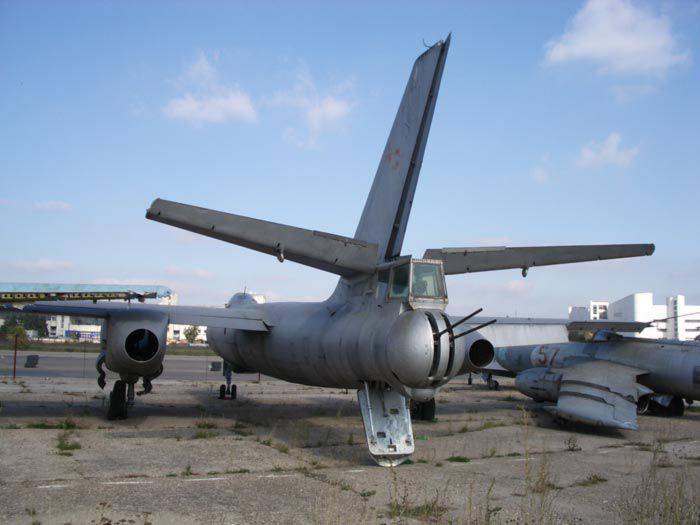
Creating a stern Rifle installation Il-K6 largely determined the design features of the aircraft and the effectiveness of its defense. Protection from the front hemisphere bomber Il-28 was provided by a pair of HP-23 fixed guns. The guns were mounted in the bow with the two sides on the Quick Release.
Given the efficiency of aircraft protection and short duration of the flight, Ilyushin decided to do without a co-pilot and hand, reducing, thus, the number of flight crew members of IL-28 three people. pilot work in the cruise mode should alleviate the autopilot. This allowed the IL-28 bomber to be made on the 3,5 meter shorter than the predecessor Il-22 and reduce its mass. The IL-28 fuselage became a well-rounded cigar-shaped and had a large elongation. The middle part of the fuselage is of a cylindrical shape, which, in combination with the high-profile scheme, provided minimal interference between the wing planes and the fuselage. The development of the aerodynamic layout, form, controls was held in fruitful cooperation with TsAGI. The entire bomb load was placed inside a spacious bomb bay in the central section of the fuselage. The control of the shutters of the bomb bay was aerial. The maximum bomb load was equal to 3 tons. It was possible to hang 50-500 kg bombs on cluster holders and 1-3 tons, including nuclear "special products", on beam holders.
crew members - pilot, navigator and radio operator-gunner armor reliably protect the most probable directions of shelling and placed in sealed and teplozvukoizolirovannyh cabins.
To ensure the safe escape of the Il-28 aircraft with high speed in emergency situations, the pilot and navigator workplaces were equipped with seats that were ejected upwards. For the gunner-radio operator, the lower entrance hatch was intended for this purpose; its lid, leant back down, was protected by the gunman-radio operator from the air flow when leaving the aircraft.
To maximize the effectiveness of military applications, the IL-28 been ascertained latest at a point in time a pilot, air navigation and radio equipment, which provided an aircraft flying in adverse weather conditions at all heights at any time. Instrumentation shall enable the automatic sighting bombing from horizontal flight in adverse weather conditions, out of sight of land.
For the aircraft, we chose a cantilevered, trapezoidal wing, with a smooth leading edge and a relative thickness of 12% throughout the span. On the aerodynamic configuration wing it was similar to that applied in due time in the MiG-9. It was supplied with direct Quad odnoschelevymi flaps that provides excellent takeoff and landing performance, allowing to work with front-line bomber unpaved airfields with limited runway length. In addition, to reduce the takeoff run on the IL-28, the installation of two solid-propellant launch accelerators discharged after take-off was provided. In normal takeoff weight 17200 kg, run with a pair of SEP-1500 accelerators was only 560 m. Accelerators AKP-1500 included when the airspeed equal 120 km / hr, with normal and overload weight, and reduced aircraft run on 40%. AKP-1500 developed a thrust of up to 1350 2350 kg and worked for 13 seconds.
Since the wing turned out to be far backward during the layout, in order to ensure the required stability and controllability characteristics of the aircraft, it was decided to install arrow-shaped feathering on the aircraft. Due to this, a sharp increase in frontal resistance and the phenomena accompanying it could occur on the tail only on such M flight numbers that were practically unattainable for IL-28.
Aircraft units were designed with the expectation of the possibility of using open riveting and convenient access for equipment installation. Special technological method of manufacturing and assembly allowed to obtain extremely high accuracy of the contours and good surface quality of the wing.
The dimensions and weight parameters of the new aircraft determined during the preliminary design ensured the sufficiency of the use of two British Nin turbojet engines with a centrifugal compressor on it. To ensure the necessary level of alignment, the engines relative to the wing, moved far forward. In order to reduce the resistance caused by the large diameter “Nim” engine, it was inserted into the wing so that only an extension pipe passed under it. Caused by long pipes insignificant loss in tension, compensated by the possibility of using a simple mechanism in the process of cleaning deploy rack chassis 90 ° and laid flat on the wheel, behind the engine under the exhaust pipe.
The draft design of the bomber was approved by Ilyushin 12 January 1948 of the year. And on July 8. Kokkinaki made on the IL-28 first flight. The test pilot highly appreciated the aircraft, noting the good take-off characteristics and easy control of the machine, which, in horizontal flight, made it possible to give up control. IL-28 at low speeds did not have the tendency to breakdown into a tailspin.
At the same time with the IL-28 experienced and experienced front-line bombers A.N. Tupolev Tu-73 and Tu-78. According to the memoirs of veterans, Andrei Nikolayevich, when he saw for the first time at the Il-28 airfield, he asked the specialists working at Ilyushin: "And this is whose illegitimate child?" Then slowly inspected the plane, familiar with its data and then had a long talk with his employees. It should be noted that the desire to keep Tupolev Tu and Tu-73-78 circuit multipoint defensive weapons, such piston-2 Tu and Tu-4, led to an unjustified increase of the crew, the size and weight of the aircraft and considerable complication of the power plant. After becoming acquainted with the IL-28, the developers modified the machines in the Tu-81 (in the series was named Tu-14) with defensive weapons system from one aft gun mount and a reduced crew to three people.
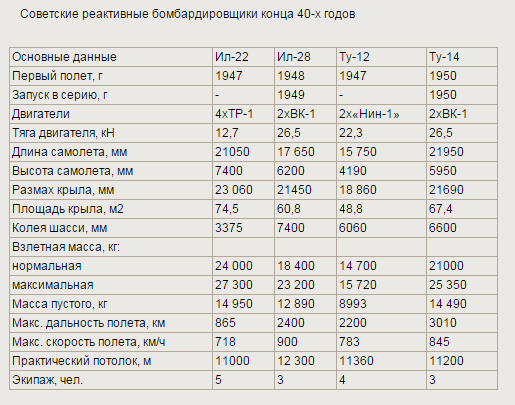
In the process of testing the IL-28 took off perfectly and sat on dirt runways, could make a horizontal flight on one engine. During the factory flight tests with TRN "Nin" bomber at an altitude of 7500 m reached flight speed equal to 881 km / h
To achieve still higher speed SV Ilyushin initiated work on the aerodynamic improvement of the machine, as well as on the use of more powerful engines on it. On the eve of the 1949, tests of the IL-28, equipped with serial Russian TRD RD-45F, began.
In mid-May 1949, Ilyushin, a government decision, was tasked to increase the speed of the bomber to 900 km / h by using more powerful VK-1 motors on the aircraft (take-off thrust 2700 kg). For engines VK-1 developed new gondolas, whose shape was chosen based on long-term studies in the wind tunnels TsAGI. In contrast to the old ones, which have a smooth convex external contour, the new gondolas had a pear-shaped configuration in terms of and were distinguished by a strongly pronounced compression of their external shape at the interface with the wing. Those. were made taking into account the so-called "rules of space". Incidentally, it is assumed that this rule is the first in the US and only 1954 year. And this despite the fact that the design developed, even before the war, the Soviet Tu-2 easy to notice its use.
On the recommendation of the Air Force Scientific Research Institute in KB for a short period of time, we designed and created an effective air-thermal anti-icing system using compressed hot air, uniformly sampled by the manifold from the nozzles of TRD compressors. The air is directed into the channels that pass through the entire length of the leading edges of the wing surfaces, as well as a stabilizer and keel, and out into the atmosphere through the gill special made at their end fairings. IL-28 became the first Soviet frontline bomber equipped semi-icing system.
In addition, on a new version of the machine, panoramic radar of blind bombing and navigation tasks was transferred from the tail, to the nose of the fuselage. The combat survivability of the aircraft was increased by installing a system for filling with neutral gases of fuselage fuel tanks. Additionally, they introduced heated windows for the pilot and navigator, as well as installed anti-surge devices on the engine air intakes.
Tests have shown that bomber variant with VC-1 engine has a maximum speed of 906 km / h. Range of IL-28 flight with a bomb load of 1000 kg was 2455 km. In the autumn of 1949, control tests were completed, and the aircraft was recommended for launch in the series. The IL-28 mass production was organized at the end of 1949 in three aircraft factories: Moscow No. 30, Omsk No. 166 and Voronezh No. 64. In 1950, a modified Il-K6M feed gun was developed, which was lighter than its predecessor on the 38 kg, which was also introduced into production
IL-28 had a unique simplicity and manufacturability of the design, which allowed the plant number XXUMX, in some periods, to produce more than a hundred bombers per month! IL-30 had a record, extremely low cost in mass production: despite the twin-engine scheme and the mass in 28 tons by this indicator, it was close to the value of the 22-ton fighter.
In 1950, the first air regiment that received the Il-28 was the bomber regiment of the Moscow district, lieutenant colonel A.A. Anpilova. A total of 10 days in this unit managed to retrain 27 combat pilots, from the Tu-2 to a new car. It should be noted that earlier by the same pilots, retraining on the Tu-2 took more than sixty days. 1 May 1950, this regiment, almost at full strength, took part in the traditional parade on Moscow. Then NATO new bomber got Beagle name (hound).
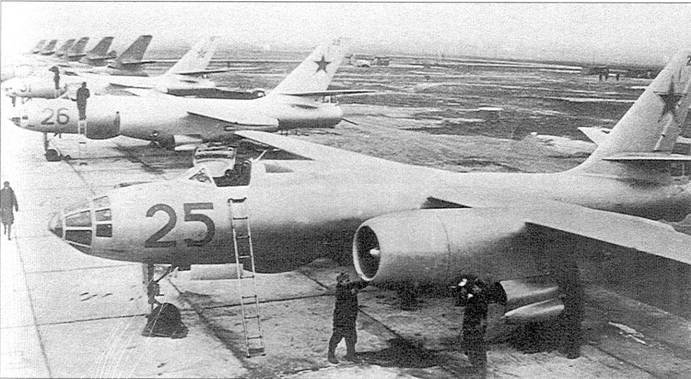
Aviators unanimously rated the Il-28 as a reliable, simple and unpretentious car with high flight, combat and operational characteristics. For various reasons, front-line IL-28 made forced landings on sand, water, marshy meadow, and after repair they returned to service. As I recalled the head of LIS senior test pilot Zaporozhye GAZ "MiGremont" Colonel V. Ryazanov, the reliability of the IL-28 was simply amazing. Thus, in winter 1971 of the year, the first squadron of 29UTAP (military unit 21323) in connection with the repair of the runway in Sital-Chaya was based at the Dallyar airfield. The central zone for flying at low altitudes, day and night, was located between the River Kura and the settlement of Tovuz. Moreover, a bearing was determined south of the Tauz point, for which it was impossible to enter - there were further mountains. When the job to simulate piloting techniques during the night, at a height 400 meters crew doubles IL-28U consisting of pilot lieutenant Vladimir Manyshkina and instructor pilot, flight commander 29 UTAP Major Jacob Seleverstova, with insufficient light guiding (second half of the night) has decreased to the height of 200 meters and deviated south of the Tauz point. When performing the right turn of the plane, the right wing touched the mountain, cutting off the 800 mm console. Feeling the blow, the pilots took the wheel itself, and the car went up. At the height of 270 m plane hit the mountain tail. Upon impact, the arrow-radio operator cab pulled away and arrows killed. The crew still managed to gain a safe height and come in to land. During the second reversal, Seleverstov reported that the right chassis release warning did not light up. We passed over the launch. It has been seen that the left-right wheel, but stood under 90 ° to the axis of the planting. At increased speed, with a fully selected steering wheel, the pilot was able to safely land. Wounded car did not disappoint.
To be continued.
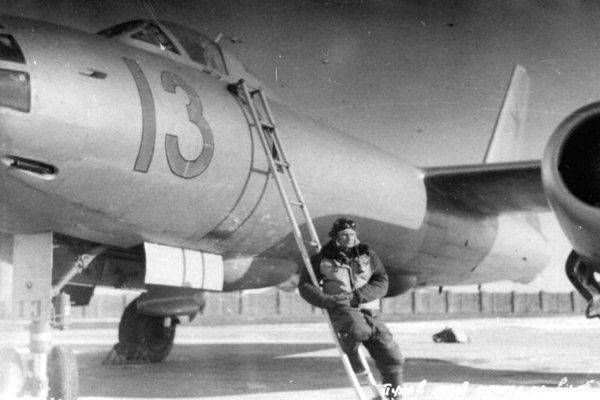
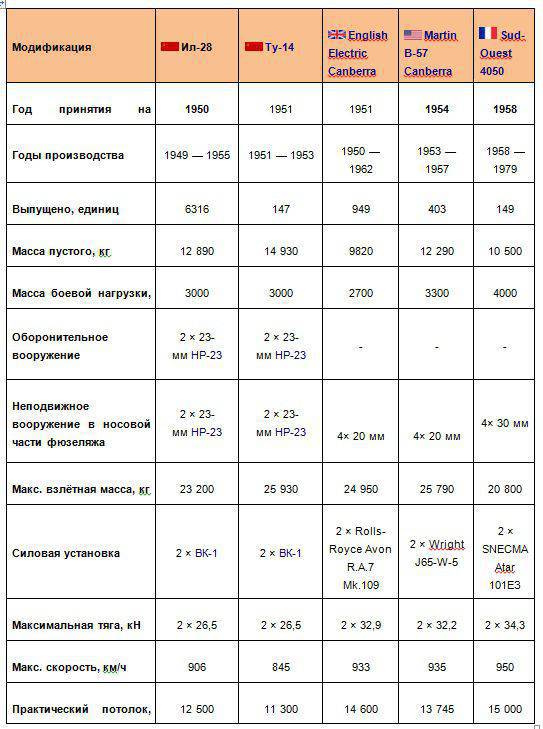
Sources:
Sergeev Y. Classic front-line aviation. IL-28 recognized as the best front-line bomber. // Wings of the Motherland. 1999. No. 4. C. 10-14.
Egorov Y., Kotlobovsky V. A good plane, which was not lucky // Aviation and Time. 1997. No. 1. C.2-12
Mekerdichan L., Pelekh A. The IL-28 front-line bomber. Zaporozhye: “Wild Field”, 2004. C. 5-17.
Yakubovich N.V. Il-28 bomber. Part of 1. // Aviacollection. 2006. No. 5. C. 3-15, 18-23, 31.
Yakubov Yakubovich N.V. Il-28 bomber. Part of 2. // Aviacollection. 2006. No. 6. C. 14-15,18-25.

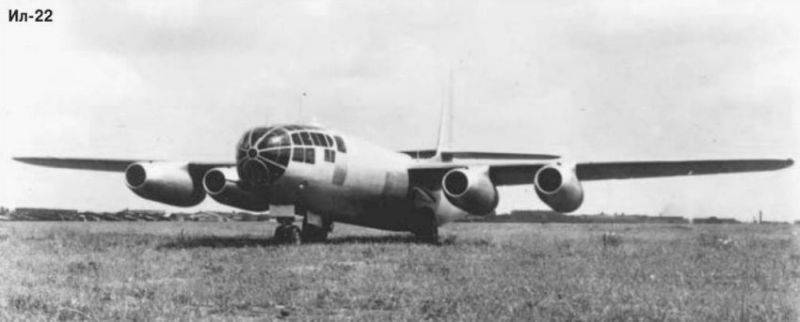
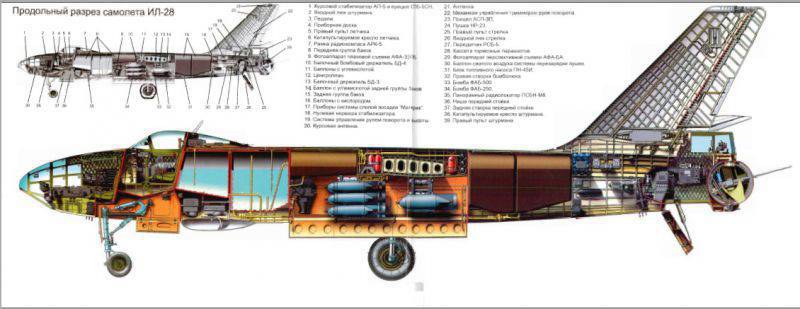
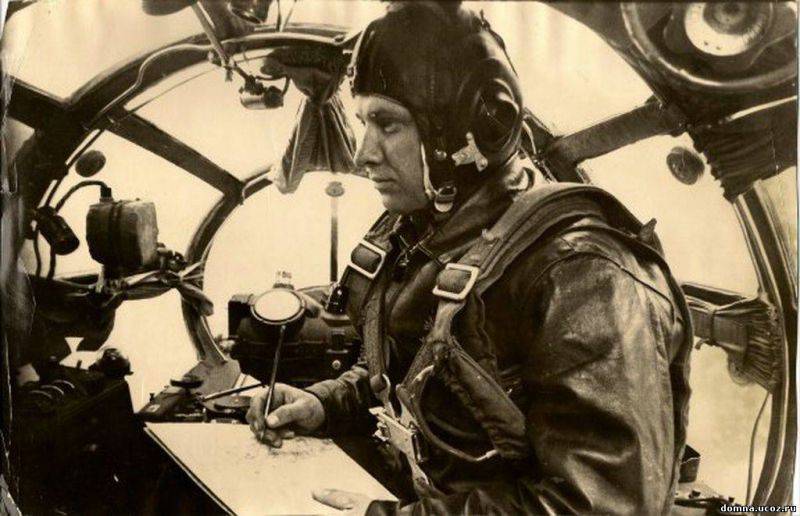
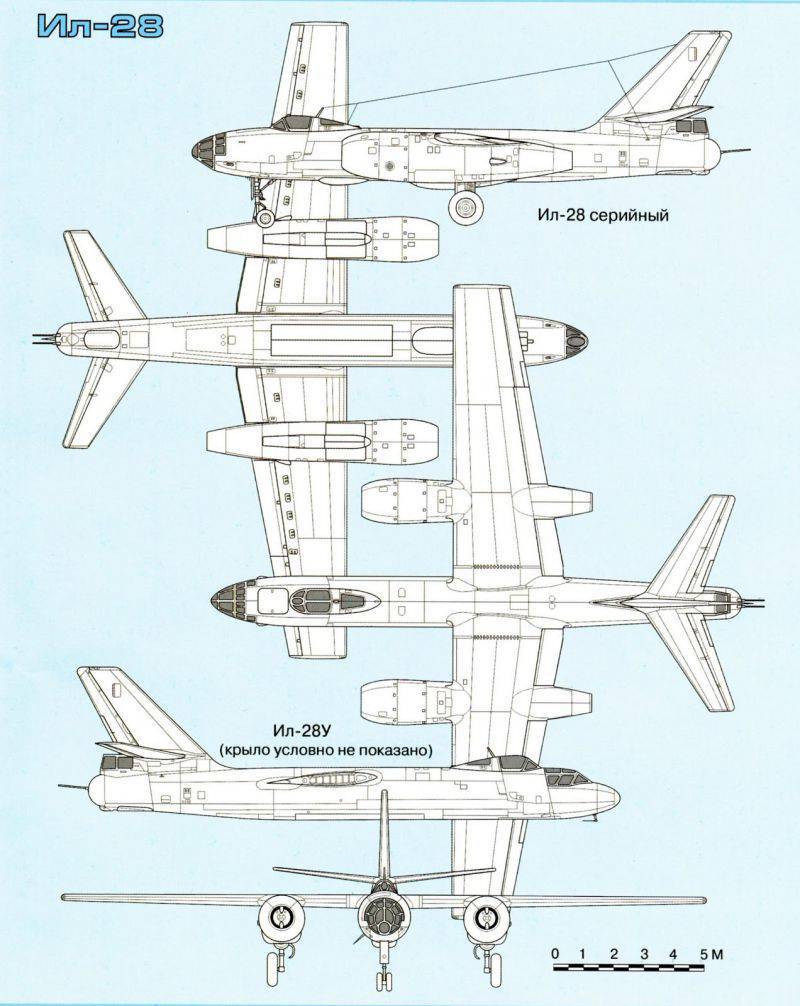
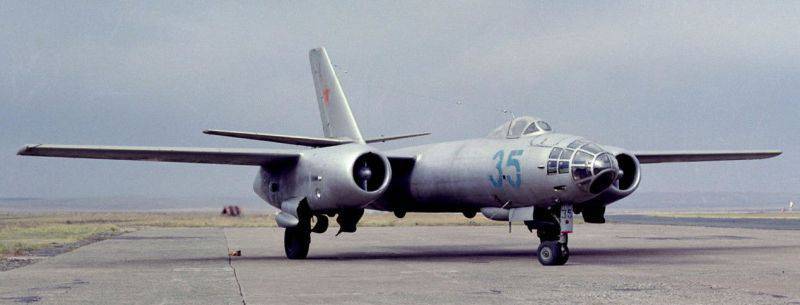
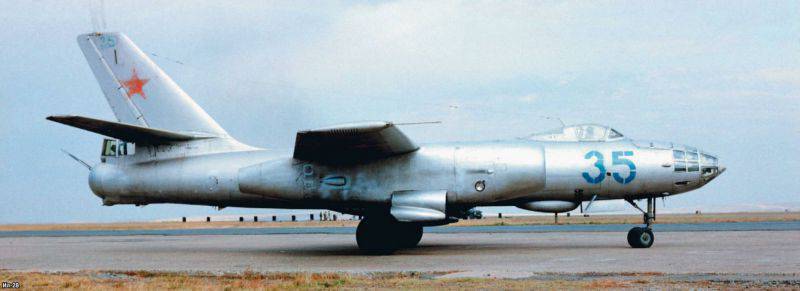
Information